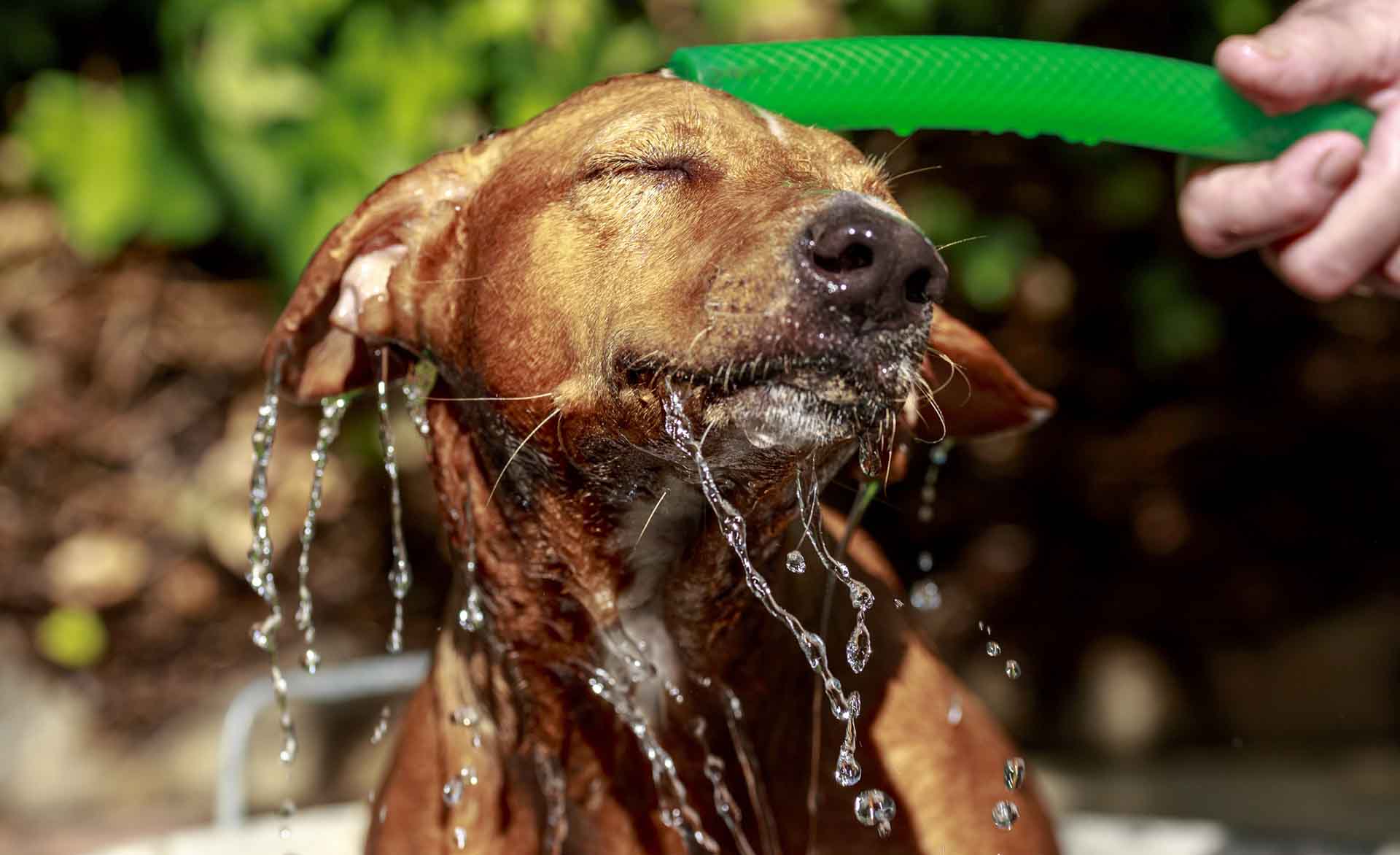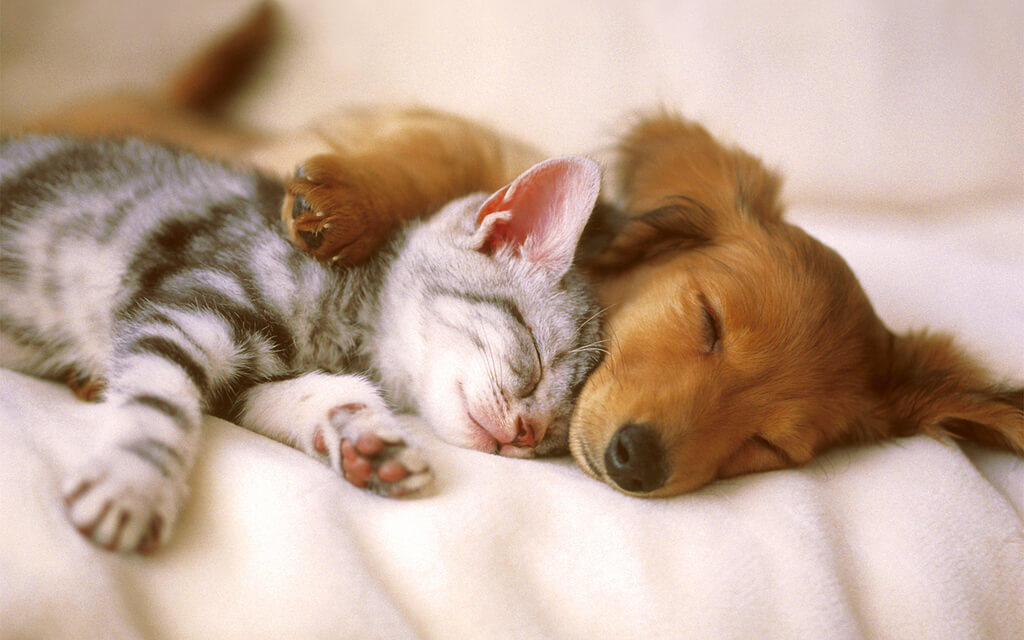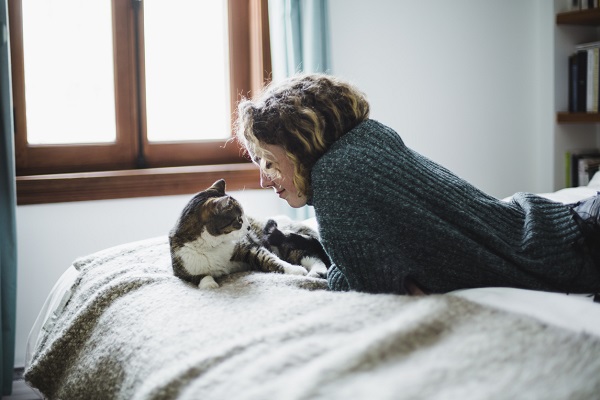-
Sweltering through hot summer days is tiring and uncomfortable for all of us. For our pets, it can be even more difficult. Keeping our furry friends cool in hot temperatures is essential not just for their comfort, but also for preventing heatstroke – a dangerous and potentially deadly condition.
We humans cool ourselves down by sweating, but dogs and cats can’t do this, except through the small surfaces of their paws. Instead, they rely on ‘evaporative cooling’: dogs pant, and cats moisten their coats with their tongues. They’ll also do things like drinking water, seeking shade, or lying down on cooler surfaces like the bathroom tiles.
Here are a few ways the Victorian Government suggests keeping keep your pet cool on hot days:
- Make sure they have plenty of fresh, cool drinking water. Provide two bowls in case one gets knocked over, and add ice blocks to the water to make it extra cool.
- Don’t leave your pet outside all day. If that’s unavoidable, make sure they have access to shady areas to escape to and lots of water, and have someone check on them as regularly as possible.
- If you can keep them inside, switch on the air conditioning or fans if possible.
- Provide ice blocks or a frozen water bottle for your pet to play with.
- Fill a small paddling pool with cool water for your dog to splash in.
- Try wetting your pet’s feet, misting their coat with a spray bottle of water, or cooling them down with dampened towels.
- Gently wet your dog with a hose if they’re panting heavily.
- Walk your pet in the coolness of the early morning or evening, rather than the middle of the day. Don’t let them exercise too much.
- If you need to take them with you in the car, put on the air conditioning or have the windows open.
- Never, ever leave your pet alone in the car on a hot day. Even with the windows open, the temperature inside a parked car can reach dangerous levels within minutes.
Warning signs of heatstroke
Heatstroke, or hyperthermia, happens when the body temperature rises too high, overwhelming its ability to lose heat. If not treated, it can lead to organ failure and death.
All pets are at risk of heatstroke in hot temperatures. However, some animals have a higher risk, including flat-faced dogs and cats (like pugs and bulldogs, or Persian and Himalayan cats), smaller pets like rabbits and guinea pigs, pets who are obese, elderly pets, pets with particularly thick, long coats, and pets with heart problems or other existing health conditions.
Here are a few signs of heatstroke to look out for:
- Heavy or excessive panting
- Difficulty breathing
- Fatigue
- Drooling/excessive salivation
- Vomiting
- Diarrhoea
- Dizziness or lack of coordination
- Rapid heartbeat
- Skin that feels much warmer than usual
- Glazed eyes or anxious expression
- A deep red or purple tongue
- Seizures.
What should you do if you suspect your pet has heatstroke?
If you notice these signs, it’s essential to take it seriously and act quickly. Early treatment gives your pet the best chance of survival.
The first thing to do is try to cool them down, according to Murdoch University veterinary experts. Try hosing your pet down or wetting them all over with a spray bottle or a towel soaked in cool water. If they are able to drink, try to get them to have lots of water. However, don’t try to cool them with ice or ice water – the rapid cooling can actually make heatstroke worse. The key is to bring the body temperature down gradually.
While you’re cooling your pet, call the nearest vet or animal emergency clinic and tell them you’re on the way. They will be able to advise what to do based on your pet’s signs.
Then you need to get to the vet as quickly as you can. Make sure you run the air conditioning in the car on the way there, or open the car windows to get some cool air in. The vet may treat your pet with cooling treatments, intravenous fluids or oxygen, and do a blood test to see if any organs have been damaged. In severe cases, you pet may need to be hospitalised.
How to keep your pet cool in summer


Looking for Pet Insurance?
They bring out your best. Help protect them with Medibank Pet Insurance.
Three updated cover levels now available!ꭥ Plus, health members save 10% on premiums.# T&Cs apply.
Things you should know
Medibank Pet Insurance policies entered into for the first time prior to 30 August 2023 and subsequent renewals of those policies are issued by The Hollard Insurance Company Pty Ltd ABN 78 090 584 473, AFSL 241436, arranged and administered by PetSure (Australia) Pty Ltd ABN 95 075 949 923, AFSL 420183 (PetSure) and promoted and distributed by PetSure’s Authorised Representative (AR) Medibank Private Limited ABN 47 080 890 259, AR 286089 (Medibank).
Medibank Pet Insurance policies entered into for the first time on or after 30 August 2023, and subsequent renewals of those policies are issued by PetSure and promoted and distributed by PetSure’s AR, Medibank.
Any advice provided is general only and does not take into account your individual objectives, financial situation or needs. Please consider the Product Disclosure Statement (PDS) ensure this product meets your needs before purchasing, or choosing to continue with the product. PDS and Target Market Determination available at medibank.com.au/pet-insurance.
-
How is ‘phubbing’ hurting your relationships?
Here’s how to stop phubbing and be more mindful of your phone habits, to help improve face to face interactions with your family and friends.
-
Are the winter blues real?
Simple ways to boost your mood in winter.
-
Mental fitness explained
Just as you work to strengthen your body, your mental health deserves attention and exercise too.
-
Signs it's time to visit the dentist
Nobody wants to go. But there are good reasons to – promise.
-
The link between stress, anxiety and jaw pain
Physiotherapist Michael Chan explains how stress and anxiety can cause jaw pain, and how to help get some relief.
-
When you can't sleep next to your partner
You love everything about them – except their sleep habits.





.jpg)
